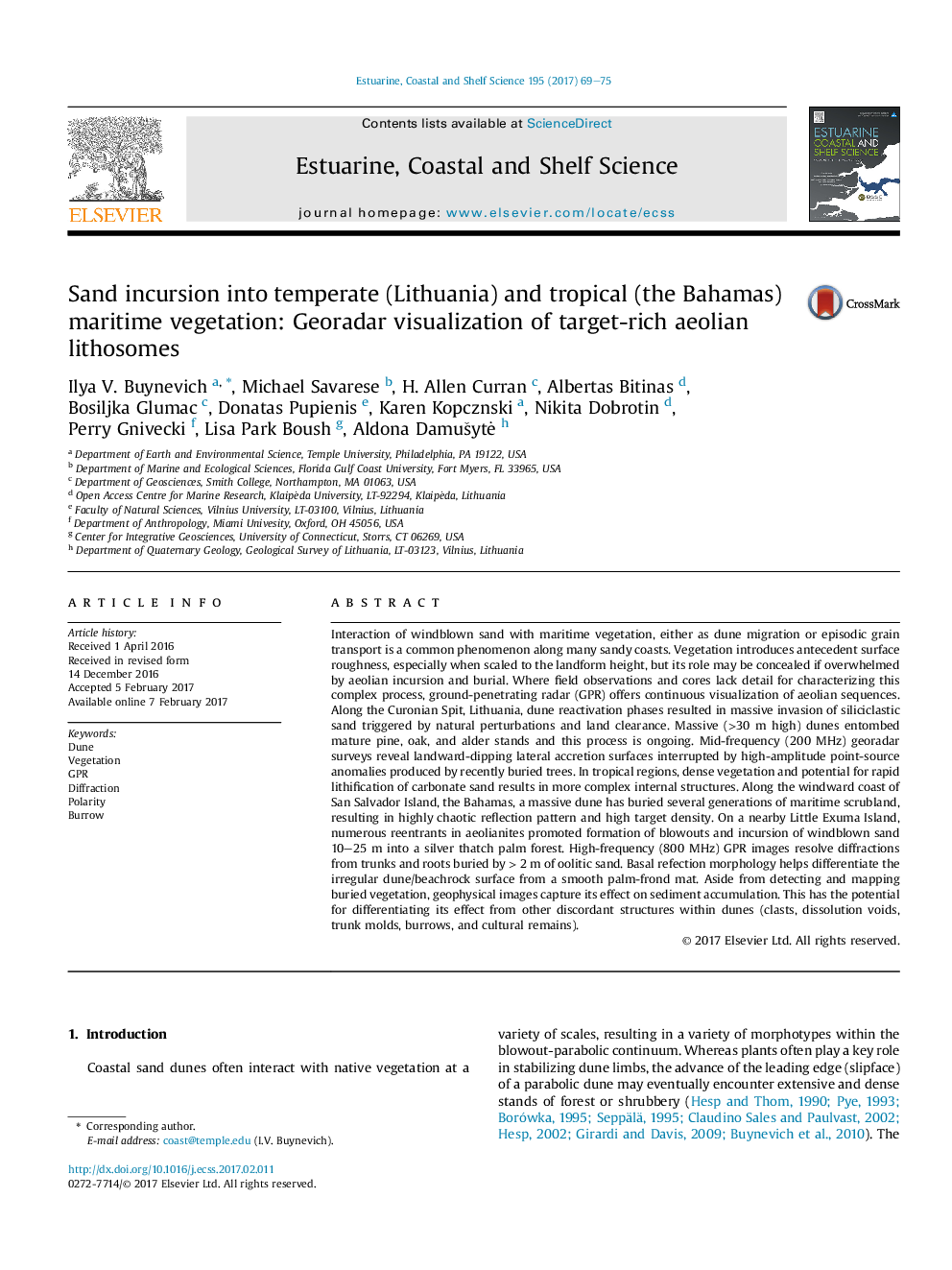| Article ID | Journal | Published Year | Pages | File Type |
|---|---|---|---|---|
| 5765033 | Estuarine, Coastal and Shelf Science | 2017 | 7 Pages |
Interaction of windblown sand with maritime vegetation, either as dune migration or episodic grain transport is a common phenomenon along many sandy coasts. Vegetation introduces antecedent surface roughness, especially when scaled to the landform height, but its role may be concealed if overwhelmed by aeolian incursion and burial. Where field observations and cores lack detail for characterizing this complex process, ground-penetrating radar (GPR) offers continuous visualization of aeolian sequences. Along the Curonian Spit, Lithuania, dune reactivation phases resulted in massive invasion of siliciclastic sand triggered by natural perturbations and land clearance. Massive (>30 m high) dunes entombed mature pine, oak, and alder stands and this process is ongoing. Mid-frequency (200 MHz) georadar surveys reveal landward-dipping lateral accretion surfaces interrupted by high-amplitude point-source anomalies produced by recently buried trees. In tropical regions, dense vegetation and potential for rapid lithification of carbonate sand results in more complex internal structures. Along the windward coast of San Salvador Island, the Bahamas, a massive dune has buried several generations of maritime scrubland, resulting in highly chaotic reflection pattern and high target density. On a nearby Little Exuma Island, numerous reentrants in aeolianites promoted formation of blowouts and incursion of windblown sand 10-25 m into a silver thatch palm forest. High-frequency (800 MHz) GPR images resolve diffractions from trunks and roots buried by > 2 m of oolitic sand. Basal refection morphology helps differentiate the irregular dune/beachrock surface from a smooth palm-frond mat. Aside from detecting and mapping buried vegetation, geophysical images capture its effect on sediment accumulation. This has the potential for differentiating its effect from other discordant structures within dunes (clasts, dissolution voids, trunk molds, burrows, and cultural remains).
